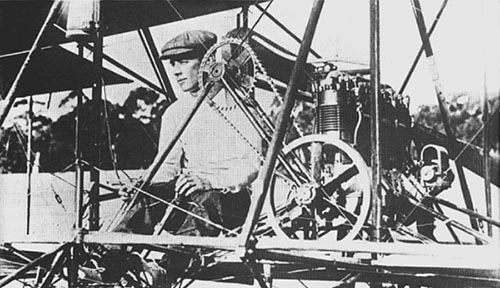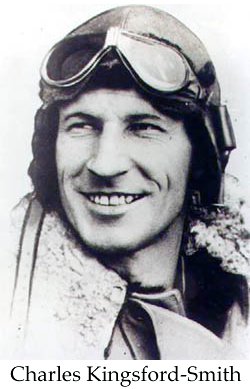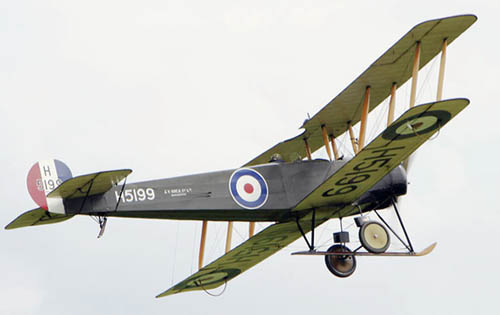Aeroplanes in the Outback
Today, aeroplanes in the outback. The University of Houston's College of Engineering presents this series about the machines that make our civilization run, and the people whose ingenuity created them.
Aeroplanes found their way into the Australian wilderness in the early 20th century, just as they were finding their way into every other uncharted corner of our planet. Australia, so vast and so thinly populated, needed the aeroplane. But aeroplanes were hardly ready for that harsh landscape. The first Australian attempt to fly took place six years after the Wright brothers flew.
One Colin Defries found a Wright aeroplane. He flew about the same distance as the first Wright flight before his hat blew off in the wind. He grabbed for it, lost control, and crashed.
Seven months later, John Duigan built his own aeroplane. In 1910, Duigan got off the ground and flew forty feet. Then he made some sixty more flights, and Australia was in the game.

John Duigan at the controls of the airplane he built with the help of his brother Reginald.
Nine years later, Australia's prime minister decided to foster flying by focusing on transcontinental flight to Australia. He offered a ten thousand pound prize to the winner of an air race from England to Darwin on Australia's north coast. That was just nine years after Duigan's flight, but airplanes had developed rapidly.
Hundreds of Australian pilots had now flown in WW-I, Duigan included. And their aeroplanes now flew, not hundreds of feet, but hundreds of miles. Still, the race was a pretty shabby affair.
Seven planes set out from London in October and November 1919 -- a variety of military trainers and bombers, all very clunky. Five soon crashed, but a winner made the trip in 27 days. Only a fifth of that time was spent in the air, the rest on the ground undergoing repair and maintenance. The runner up took longer -- almost seven months -- to finish the race.
 Yet the point was made. Aeroplanes would serve Australia. Eight years later, Australia's most famous pioneer pilot, Charles Kingsford-Smith made a much more important flight when he traced the 7500-mile perimeter of Australia in ten days.
Yet the point was made. Aeroplanes would serve Australia. Eight years later, Australia's most famous pioneer pilot, Charles Kingsford-Smith made a much more important flight when he traced the 7500-mile perimeter of Australia in ten days.
By then, of course, barnstorming was in full swing. When the Prince of Wales toured Australia by train in 1920, one flier planted his aeroplane in the air a few feet over the Prince's car and stayed there for forty miles. The Prince was delighted.
That same year, Qantas Airlines originated when four developers bought an Avro 504K to fly passengers and mail. The Avro 504 had soon become obsolete as a WW-I fighter. But it was solid and fairly safe. Production continued after the war. It went through many models, over eight thousand were made.
Of course Qantas began by serving people who'd never heard of, much less seen, an aeroplane. One pilot told of landing on remote farm. He was met by an awestruck sheep herder, hat in hand, mumbling, "H-h-hello, God, my name is Smith." Well, you and I no longer look on airplanes with that kind of wonder. We need to remember what a soul-changing thing it was to see, for the first time, a machine doing what only birds and angels were supposed to do.
I'm John Lienhard at the University of Houston, where we're interested in the way inventive minds work.
The Bush Pilots. (Alexandria, VA: Time-Life Books, 1983): Chapt. 2.
For more on the Avro 504, see the Wikipedia article.
Click here for more on John Duigan, Reginald Duigan, and their airplane.
For more on Kingsford-Smith, see the Wikipedia article.
Click here for brief biographies of many Australian pioneers of flight.
For more on the England-Australia air race, see the Wikipedia article.
For more on the Vickers-Vimy aeroplane -- the one that won the England to Australia race -- see Episode 2209.
Image sources: John Duigan courtesy of the National Library of Australia, Kingsford-Smith courtesy of Wikipedia Commons, Avro504K from the British Air Museum.

An Avro 504K -- like the first Qantas Airlines airplane.